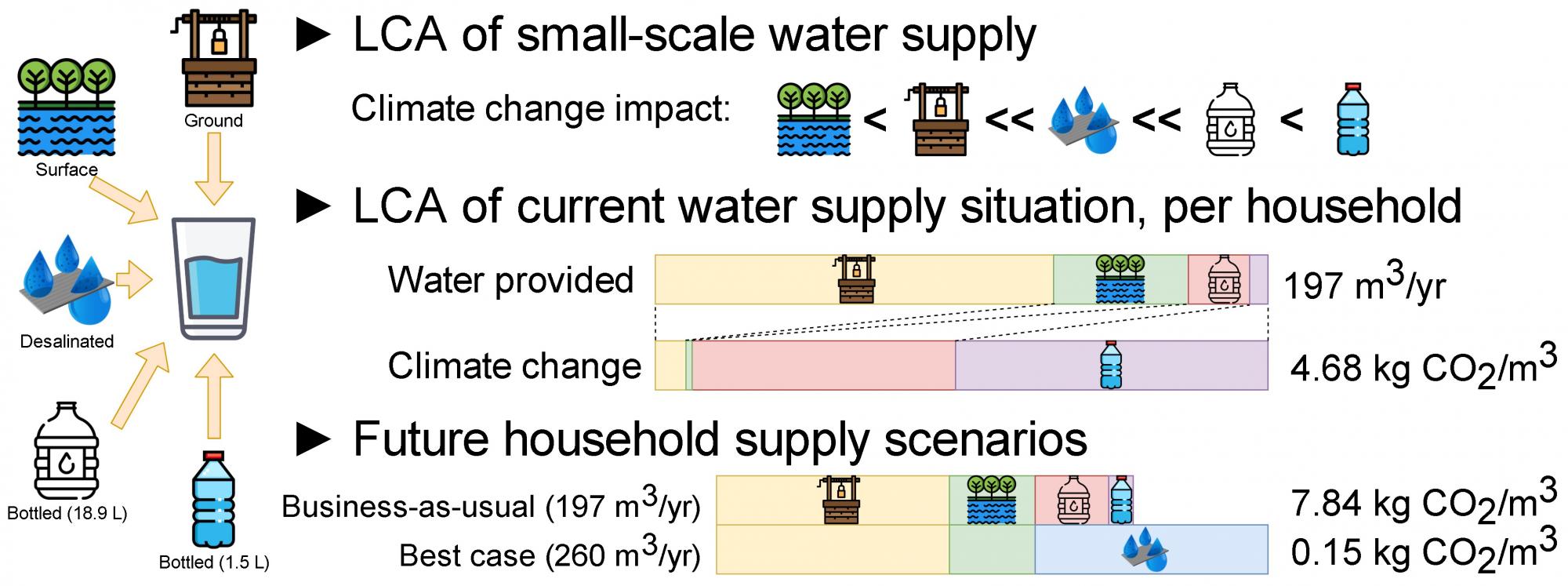Citation:
Abstract:
Access to clean water is one of the targets in the UN Sustainable Development Goals. However, millions of people are still without basic water services, predominantly in rural areas in developing nations. Previous studies have investigated the environmental impacts of water provision, but they mostly focused on large-scale urban systems. This paper considers for the first time the life cycle environmental impacts of different water supply options applicable to remote communities in developing countries. Focusing on the Southeast Asia-Pacific (SEAP) context, a cradle-to-grave approach is followed to estimate the impacts of locally-sourced groundwater, surface water and desalinated seawater as well as externally-sourced bottled water. The results reveal that surface water is environmentally the most sustainable alternative. Locally desalinated water, powered by diesel electricity, has two orders of magnitude higher impacts than surface water. However, externally-sourced water in plastic bottles is the worst option with 4–155 times higher impacts than desalinated water and up to three orders of magnitude higher impacts than surface water. This is largely due to the impacts related to the production of bottles. Doubling their recycling would reduce the impacts by 7–23% but bottled water would still be environmentally the least sustainable option. Although water in single-use bottles currently provides only 3% of the water supply of a representative remote community in the SEAP region considered in this study, it accounts on average for more than 50% of the total impacts from water consumption. By 2030, population increase could lead to greater reliance of remote communities on bottled water and 60–73% higher impacts of water consumption per household. Relying solely on local surface, ground and water desalinated using solar power and avoiding bottled water would reduce the impacts by 33–99% relative to the current situation. This would also improve considerably water availability and security in remote communities. The findings of this study will be of interest to national and local governments developing future policies aimed at increasing access of remote communities to clean water.


